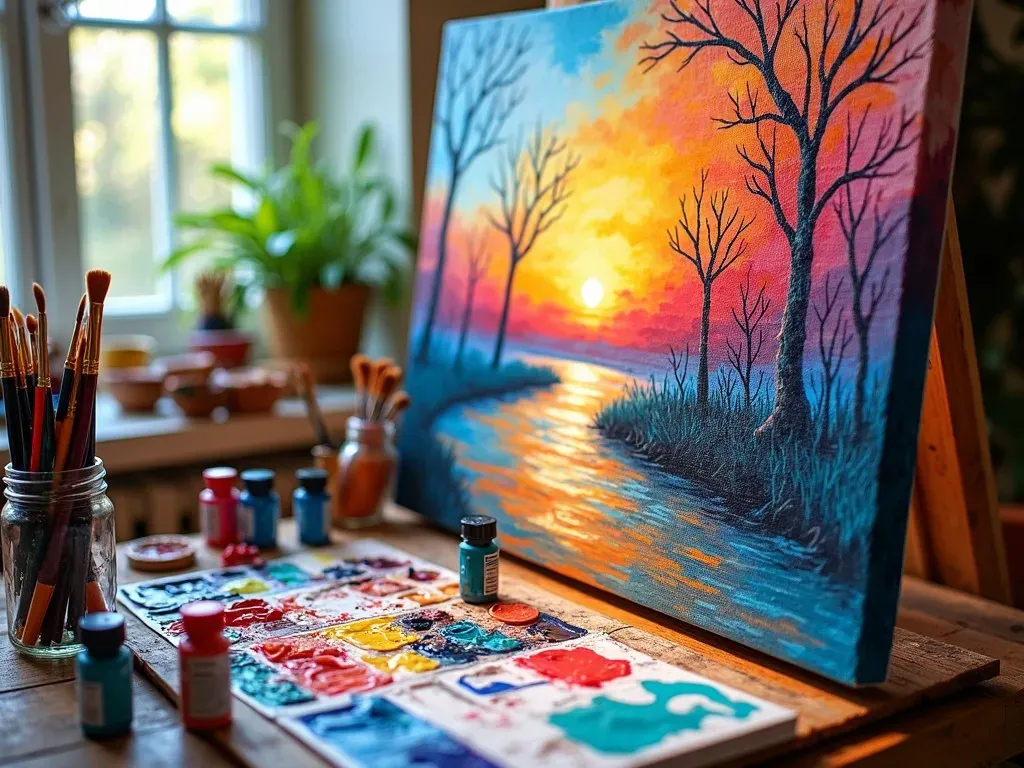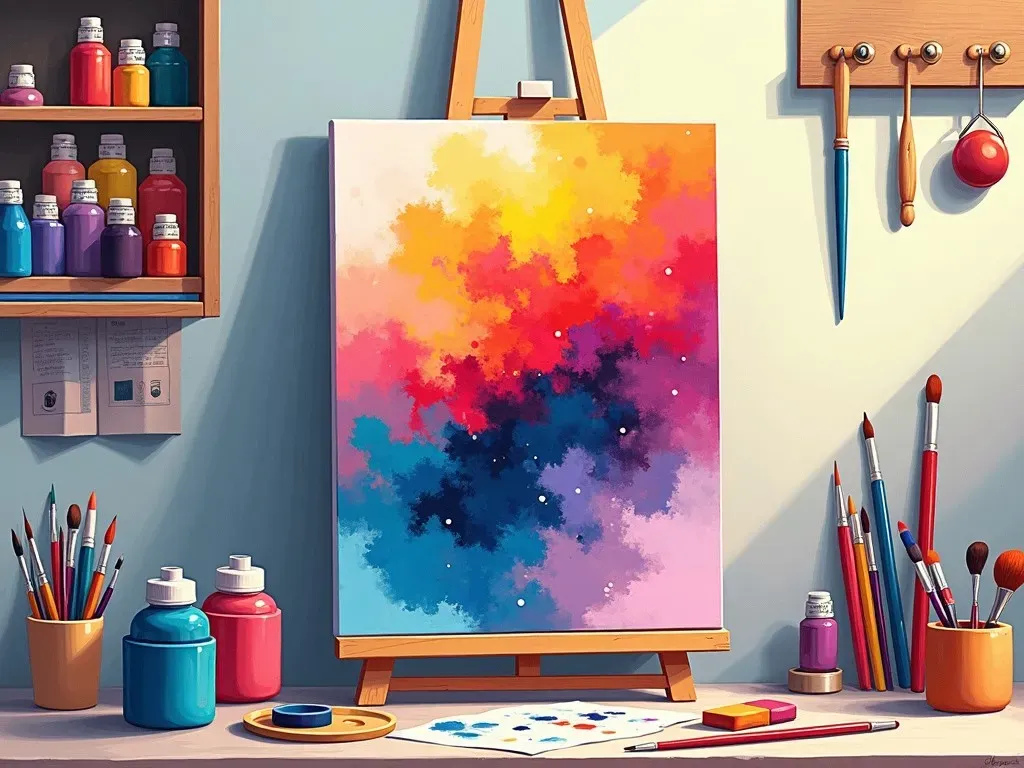One significant advantage of acrylic paint over oil is its rapid drying time. While oil paints can take weeks or even months to dry fully, acrylics dry within minutes, allowing artists to layer and paint much more efficiently.
Speed and Efficiency in the Creative Process
Acrylic paints dry remarkably quickly, often within 10 to 30 minutes, depending on the conditions like humidity and temperature. This is a substantial advantage for artists who prefer not to wait long between layers. The fast drying time allows for immediate adjustments, applications of new layers, and the ability to work on multiple pieces simultaneously without the risk of smudging or disturbing previously applied paint.
Comparison of Drying Times
| Paint Type | Average Drying Time | Layering Capability | Potential Issues |
|---|---|---|---|
| Acrylic | 10-30 minutes | Immediate layering | Colors may darken as they dry. |
| Oil | Days to months | Longer wait for layering | Possible dust contamination. |
This table illustrates the drastically different timelines associated with drying between acrylic and oil paints, highlighting acrylic’s suitability for artists needing agility and speed in their work.
Versatility of Acrylic Paint
Another essential advantage of acrylic paint is its versatility. Acrylics can be used on a variety of surfaces beyond canvas—paper, wood, fabric, and even glass. This flexibility makes acrylics a favorite for mixed media artists. On the other hand, while oil paints are typically reserved for canvases and specific boards due to their heavier consistency, acrylics easily adapt, allowing artists to express their creativity on unconventional materials.
Artistic Freedom with Surface Options
- Canvas: The traditional choice that works well with both mediums.
- Paper: While oil can warp paper, acrylic remains flat.
- Wood: Acrylics bond well, allowing for the creation of unique mixed-media pieces.
- Fabric: Acrylics are perfect for fabric painting, lasting longer and retaining their vibrancy.

Safety and Cleanup
Acrylic paint ranks higher in terms of safety compared to oil paints. Often, oil paints require toxic solvents for thinning and cleaning, making them a health hazard if proper ventilation or protective gear is not used. Conversely, acrylics can be cleaned up easily with soap and water, emphasizing their accessibility for artists of all levels.
Safety Comparison
| Paint Type | Cleaning Solvent | Toxicity Level | Safety Precautions |
|---|---|---|---|
| Acrylic | Soap and water | Low (non-toxic) | Minimal, basic hygiene practices. |
| Oil | Solvents (turpentine) | High (can cause health risks) | Must use proper ventilation. |
Not only do acrylics offer artists faster drying times and versatility, but they also provide a safer environment for more health-conscious creatives.
Affordability and Availability
A major financial benefit of acrylics is their affordability. Acrylic paints generally cost less than oil paints, and artists using acrylics often require fewer specialized tools and materials. For those operating on tight budgets, the lower cost of acrylic sets, brushes, and surfaces makes starting and expanding a painting repertoire much easier.
Cost Comparison
| Item | Acrylics | Oils |
|---|---|---|
| Paint Tubes (per oz) | $0.50-$1.00 | $2.00-$5.00 |
| Brushes | Lower range | Higher range |
| Clean Up Supplies | Minimal | Higher |

Layering Techniques and Blending
While oil paints are often praised for their blending capabilities due to slower drying times, acrylics offer unique advantages in layering Techniques. The rapid drying time allows for quick adjustments without compromising the underlying layers, making it easier to create specific effects such as glazing or impasto.
Layering Comparison
| Technique | Acrylic | Oil |
|---|---|---|
| Glazing | Quick adjustments possible | Slower, risk of muddying colors |
| Impasto | Can create texture quickly | Takes longer to build up |
Artists who prefer to work quickly often find that acrylics serve them better through efficient layering and texture applications.
FAQs
Q1: Can you mix acrylic with oil paints?
A1: No, mixing acrylic with oil paints is not advisable because they have different bases and drying times. Acrylics are water-based, while oils are oil-based, leading to incompatibility.
Q2: Does acrylic paint fade over time?
A2: Acrylic paint is generally durable and Fade-resistant when kept out of direct sunlight. However, prolonged exposure to UV light can cause fading. Proper varnishing can help protect the artwork.
Q3: Can acrylic paintings last as long as oil paintings?
A3: While oil paintings have a long history of durability and longevity, acrylics can also last for generations if stored and displayed properly. Their resistance to yellowing is a plus.
Q4: What is the best way to keep acrylic paints from drying out on the palette?
A4: Using a palette with a lid or a wet palette with a damp sponge can help keep acrylic paints moist while working, allowing more time for blending and adjustments.
Q5: Can you use acrylic paints on top of oil paints?
A5: It is not recommended, as the acrylics may not adhere properly to the oil base. Always apply acrylic first if planning on layering.
For additional information, you can refer to Fine Art Tutorials for further details on oil vs acrylic paints.

By making informed choices in the medium you select, the potential for creative expression can expand significantly. Acrylic paint indeed holds a distinct advantage over oil in terms of drying time, versatility, safety, affordability, and ease of use, making it an excellent choice for artists seeking an efficient and effective painting experience.
